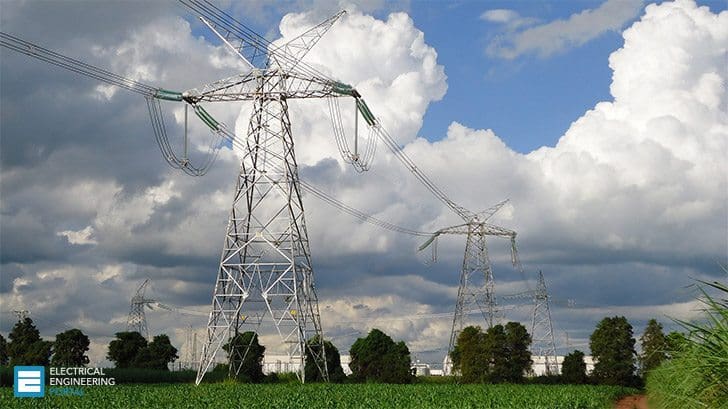I do notice a number of items upon which I care to comment. Few of my remarks will be of the “well done!” variety, so in advance of those, let me say “Well done!”. Rather, most will be ones with which I take issue.
Thanks, let’s make it less wrong. I know there are errors but I need help finding them.
Energy Situation -
A fine précis of the history of energy consumption. The sole - but very large - statement of yours with which I take issue is this paragraph:
If we want a super prosperous future for humanity even just with today's energy usage patterns, then 10 billion people in 2050 will consume ~10 kW of power per capita which is 100 TW or about 5x what humanity consumes today.
This does not address other consumptives, albeit ones that also use some of the power you discuss. I do not discuss “nature” but rather mention only the Big Three traditionally used to represent humankind’s bare necessities:
*Food - meaning of course agricultural production, with its demand of land and other inputs;
*Water - use by man of which both stresses other parts of the biosphere and otherwise, or in addition, will consume an immense chunk of that ~10kW/pp;
*Shelter - the demand for wood, concrete and other inputs also rise immensely were humanity to enjoy a super-prosperous future. Whence comes the global wood inputs? And concrete entails far more than the petajoules addressable by an energy revolution. For example: WHERE are the requisite sources of sand?
The other consumptives are implicitly captured in the other sections about disruptive technology, construction, manufacturing, desalination and indoor food production. The rest of the essay describes why I think we will blow way past 10 kW/person power consumption.
This broad statement about price elasticity of demand in the
Disruptive Technology Expands Markets section encapsulates the overall argument:
"This pattern is also predicted by basic economic theory: when technology improves the combined "total factor productivity" of land, labor and capital such that supply of a certain good or service has increased, the market clearing price decreases and the total quantity sold increases. The “price elasticity of demand” for a good/service measures how much the quantity demanded increases for a given decrease in market price (
link). More formally, it’s the slope (1st derivative with respect to price) of the demand curve at any point. We can only speculate about what the true shape of the demand curve for energy looks like at the costs we're talking about, because it's uncharted territory with no readily available econometric data."
In other words, for many applications material costs will be substituted with energy costs, but to what degree is the hard part to estimate.
Regarding water, I also think there's great potential to rethink our land use patterns to better manage water flow in arid regions, like in this brilliant project creating a biodiverse tree and vegetable farm in Jordan:
To learn more about Geoff Lawton and the Permaculture Masterclass series! I’ve been working in Jord

www.permaculturenews.org
From a first principles atomic physics perspective, natural sand is actually not required for concrete. Concrete requires (
source):
- Cement
- Water
- Aggregate
- Admixtures for some applications
My understanding is that aggregate can be just about any kind of crushed up rock. We have plenty of water. Admixtures are mostly common chemicals. Below is the atomic recipe for common Portland cement (
source), which includes the following common crustal elements: Ca, O, Si, Al, Fe, S.
Sand is currently used for cement manufacturing because it's the most economical source of silicon dioxide (SiO2; also, "silica") today and also can be a good source of aggregate. Sand is mostly silica crystals mixed with pulverized rock dust. We have plenty of silica, as it accounts for 59% of the Earth's crust by mass, including the two most common minerals, feldspar and quartz. That same silica can also be used for making yet more solar panels, further increasing the energy supply in a virtuous cycle.
Artificial sand, such as pulverized granite, is already in use and it too will get cheaper when energy used to run the smashing and grinding machines is more affordable. Natural sand has some nice properties but as far as I’m aware it’s not strictly necessary for the vast majority of applications.
How about first principles for mining in general? The basic goal of mining is to take atoms from the crust and rearrange them into concentrated buckets separated by element to be used as raw material for the next level of the economy. Most of the atoms in the crust are bound together into solid state, which happens with ionic bonds, covalent bonds and polar bonds. Bonds between atoms can be broken with...you guessed it...energy. Any solid can be broken into smaller chunks with mechanical energy and can be melted or vaporized with thermal energy. Solar can power both options.
To this point, in 2008 Ugo Bardi published a well-researched
essay on The Oil Drum website about a hypothetical Universal Mining Machine. The first few sentences are:
In a science fiction story that I had in my hands, many years ago, a group of explores [sic] stranded on a remote planet needed to build a new spaceship using local materials. They had no time and no resources for traditional mining, so they built a "universal mining machine" that extracted elements from the planet's crust. The machine crushed rock, heated it and transformed it into an atomic plasma. The ions in the plasma were accelerated and then separated according to mass by a magnetic field. In input, you had just ordinary rock; at the output, you had all the elements present in the original rock, each neatly packed in its own box.
That story (I think it was by Poul Anderson) has always fascinated me. Why can’t we build a machine like that here, on Earth, and stop worrying about running out of mineral resources?
Another key passage:
In general, the energy required for extracting something from an ore is inversely proportional to the ore grade. That is, it takes ten times more energy to process an ore which contains the useful mineral in a ten times lower concentration (Skinner 1979). This relation holds for ores of the same composition which just change in grade.
...
Let's make an approximate calculation for evaluating this energy. Consider copper, again, as an example. Copper is present at concentrations of about 25 ppm in the upper crust (Wikipedia 2007). To extract copper from the undifferentiated crust, we would need to break down rock at the atomic level providing an amount of energy comparable to the energy of formation of the rock. On the average, we can take it as something of the order of 10 MJ/kg. From these data, we can estimate about 400 GJ/kg for the energy of extraction. Now, if we wanted to keep producing 15 million tons of copper per year, as we do nowadays, by extracting it from common rock, this calculation says that we would have to spend 20 times the current worldwide production of primary energy.
…
Of course, this is just a rough order of magnitude estimation. We may not need to really pulverize the rock at the atomic level and we may find areas of the crust which contain more copper than average. For instance, Skinner (1979) proposed that we could extract copper from a kind of clay named biotite and that would need a specific energy of extraction approximately ten times larger than the present requirements. If the problem were copper alone, that would be doable. But if we have to raise the energy requirement of a factor of ten for all the rare metals, clearly we rapidly run into levels that we cannot afford, at least at present.
What was not obvious in 2008 was the meteoric rise of solar and batteries that would come in the ensuing 14 years.
Also, now we have a crazy company attempting to build a machine named Prufrock that can allegedly mine underground at 7 miles per day in a future version with unprecedentedly low boring costs. Prufrock is ostensibly a machine for digging tunnels but in the process it is conveniently producing a steady supply of pulverized rock at an approximate cost target of $100/m^3 if we estimate it'll be able to drill a barebones tunnel for about $2M per kilometer once energy costs fall and the technology matures. Density varies, but rock is about 3 metrics tons per m^3, so this comes out to approximately $30/ton.
Volcanoes are not the only possible source of lava. We can make our own lava in big crucibles using furnaces powered by sunshine. We can then separate the elements or even hypothetically form our own extrusive igneous rock by controlling the cooling process. Elements within the lava would gravitationally sort themselves according to density, like oil floating on water or they could be separated with
fractional distillation like the Universal Mining Machine.
I am not sure if this would work economically but the physics seem to suggest it would work and the main cost would be the energy required. Also, as total factor productivity in the global economy continues to rise there will be more willingness to pay higher prices for material inputs if necessary.
For wood needs, if the controlled environment agriculture thing ends up being the dominant method of food production, that would free up plenty of room for trees, and if the desalination and aqueduct thing works, there will be plenty of freshwater for helping forests grow. So wood would be more abundant than it has been in centuries.
I also think cheap energy will make it more economical to make “engineered wood” using other sources of fiber such as bamboo. Here is an example of bamboo panel fabrication. The factory is fairly low tech so this could be improved significantly. Note the amount of mechanical machining work required and the use of steam to straighten out the strips.
Then there is the possibility of making cellulose and/or lignin fibers synthetically with precision fermentation for biocomposites.
Example. Tony Seba, the crazy guy who has been calling tech trends successfully for a long time now, is predicting plummeting costs and disruption for precision fermentation.
I think the collective cleverness of humankind should not be underestimated, especially when our powers are fully unleashed by this energy revolution.
Cost Collapsing & Doomed Legacy Energy “Assets”
The graph of Ramez Naam’s that you provide is a log-log graph. I’ve never met a log-log that I didn’t love look at with as much askance as with a kaleidoscope on a roller coaster. The reason is that just about anything looks like a straight line when plotted log-log. Amusingly, the BNEF data on that chart gives the lie to what I just wrote (though with the correspondingly lowest Rˆ2).
But I also don’t find data corroborating that something that costs less gets more customers as hugely illuminating. I think you provide a similar such chart, I think out of ARK, further on.
What definitely is from ARK is the graph of Li-ion battery costs over time. As shown, it appears that they enjoyed a massive diminution in cost from 1985 to 2005…and then not only stagnated, but are provided only to 2012. Yet you write of the data as demonstrating Wright’s Law in action. I think the subsequent chart was (ARK’s not yours) attempt to Invoke Wright’s Law, but overall it seemed rather….goopy…to me.
To be - possibly - continued.
Li-ion battery cost declines have stalled out somewhat, but Tesla’s new 4680s and step-change to LFP for lower range vehicles will break through this plateau.
Remember Battery Day? Elon and Drew were saying they’re going to cut the cost per kWh by 56% by making an inflection point in the battery cost learning curve.
Elon: “We’ve got to get the cost of batteries down. We’ve got to be better at manufacturing and we need to do something about this curve. The curve of the cost per kWh of batteries is not improving fast enough. So we’ve given this a lot of thought over many years to say, ‘Okay, how can we radically improve the cost per kWh curve?’ It’s been somewhat flattening out in recent years.”
Drew: “Yeah. I mean, early growth was promising but you can see we’re kinda plateauing. So that’s what’s motivating us to rethink how cells are produced and designed.”
Elon: “Yeah, exactly, so…EV marketshare is growing but EVs still aren’t accessible to all. And you can see as Drew was saying it’s starting to flatten out a little bit because the rate of improvement of the affordability of cars is just not fast enough. So that’s why we’ve got Battery Day.”
The log-log plot showing Wright’s Law as applied to solar PV was just an illustration, not proof in itself. Also, the Lazard cost levelized cost of energy estimates are the gold standard in the industry, and their data shows a steady exponential Wright’s Law relationship with R^2 of 0.994, which would only happen with an almost perfect exponential decay function.
Here’s a longer-term chart illustrating the cost declines across 45 years and two and a half orders of magnitude. If I remember correctly, the trend aberration from 2002-2012 was caused mostly by raw material price spikes, not a slowdown in the actual learning curve.
(
Source “
Swanson's law is the observation that the price of solar
photovoltaic modules tends to drop 20 percent for every doubling of cumulative shipped volume. At present rates, costs go down 75% about every 10 years.”)
Amazing write-up! Kudos to your effort. I think very very few utility professionals understand this, and most of those who understand are not in a position of great influence. Utilities are moving at the speed of ICE Auto right now, and will get majorly disrupted!
Thank you! Yeah, legacy plants will be retiring earlier than TSLA hodlers.
The quality of posts in this thread has suddenly increased in a manner that mirrors some of the brighter days of TSLA. I take this not as an omen, but a reminder of why I remain a dedicated investor when times are tough .
Thank you.
Browsing the old
@DaveT megaposts thread was in no small part why I now have time to write this stuff so this is a way of paying it forward.
I also get free high-quality feedback that might help me from making a grave mistake in my investment strategy.
This is an astounding post. Have you published this elsewhere? At first skim, I think you are profoundly right in much of what you write here.
Nope, but it’s been bouncing around in my mind for a long time and I decided to put it here largely because I don’t know of another place where I can get better signal-to-noise ratio on feedback correcting the inevitable mistakes. Much of the information and inspiration came from RethinkX/Tony Seba and Casey Handmer’s blog.
Thanks for an awesome post, but can I get a citation for this? The data I could find is an order of magnitude smaller.
Re: Transmission losses: Yeah it’s more like 3-10% loss, thanks for the correction. I was going off memory and my brain swapped 70% total power loss with transmission loss. My bad. I should probably ask for a refund on my EE degree. In my defense, I was more on the computer engineering side

.
The transmission losses are also more than resistive heating anyway:
There are two types of transmission and distribution losses - technical losses (due to energy dissipated in the conductors) and commercial losses

electrical-engineering-portal.com
The main cost of the mega regional transmission grids is the construction, maintenance and administrative cost of the hardware, so this does not have a major impact on the overall argument about legacy energy assets losing competitiveness. This 2018
study from University of Texas-Austin estimated $30/MWh total transmission and distribution costs on average. The point remains that the fully accounted cost of mega regional transmission grids is more than the cost of where SWB smaller grids are heading. Also the point remains that solar in particular is uniquely non-reliant on having a grid at all; for many exurban and especially rural folks, a solo homestead power supply will eventually be the cheapest solution, with maybe a few interconnections between neighbors.
Anybody that seriously discussed indoor farming for anything other than consumer preference high value shifting has never farmed. Indoor farming is terrible for the environment from beginning to end. Horrible. IT is al ESG greenwashing. ALL.
It is such greenwashing that the mars project even admitted that and said vertical farming, even on mars, made no sense and it was better to try to replicate the advantage of large fields. On freaking mars.
My brief skim therefore stopped when I saw that sub heading and trashed the whole thing as it immediately lost credibility.
Good guess about me never having farmed, congratulations! I have actually worked in food service and then manufacturing for my whole career. I think a manufacturing background is an applicable knowledge base here because indoor farming operations are effectively advanced plant-growing factories. I have also spent countless hobby hours researching conventional farming, indoor farming, permaculture, indoor gardening, and composting, so I think I have a fairly decent outsider’s understanding of the industry and the relevant biological and ecological design principles. If someone with more expertise in farming wants to teach me something I would welcome that. I like learning.
The entire essay obviously contained a great deal of speculative conjecture about future sources of renewable energy demand. The purpose was not 100% accuracy and precision but rather to provide a collection of possibilities that appear reasonably likely in order to arrive at a rough order of magnitude guess of where the energy market is headed. The wide estimation intervals and frequent caveats would have been your first clue if you had bothered to read. An error in one section of the argument does not invalidate the entire argument. It would just mean I was insufficiently informed about that particular topic. Unless your entire reasoning is essentially “Gigapress has a silly prediction about one topic and therefore has no credibility in any area” which is a bit of a non-sequitur. For example, I think you are quite mistaken about robotaxis not being profitable but I’m still willing to listen to your thoughts on other matters. When you posted recently about this, I replied with a reasoned response about why I disagree. I ask that you do the same. Critiques are useful; insults are worse than doing nothing at all. I will delete that whole section if you convince me, and I listen to logic because I want to understand for myself and I want to avoid propagating misinformation.
The math in this case is a sum of energy consumption increase projections, so if you disagree with one term you can simply delete that term from the sum. If you had actually read the essay it would have been obvious that even if the majority of the predictions don’t come to pass, there is still ample support for the primary thesis that SWB growth will dramatically increase total energy consumption.
So, would you elaborate on the point please? Why is controlled environment agriculture environmentally horrible and all greenwashing? I listed several specific environmental benefits that I think CEA has over field agriculture. Are those benefits not actually real and if so, why? Is my list missing key negative factors that outweigh the benefits? What is your hypothesis for why Kimball Musk, sibling of the world’s most prominent and well-resourced environmentalist, is pursuing CEA with his company
Square Roots? At first glance it seems quite unlikely that Kimball would have such an inaccurate understanding of the dire environmental consequences of his business model, or that he would be aware but not care and lie about it.
Last point… I would argue that comparing the plant cultivation industry on Earth with a speculative plant cultivation industry on Mars is not quite an apt analogy. These two use cases have radically different environments, goals, available natural resources, and access to labor and industrial capacity. If you want to argue in favor of that point I think more justification is warranted. One fact is clear: controlled environment agriculture is absolutely required for hypothetical Mars habitats because obviously the outdoor environment is utterly inhospitable to plants. Whether they make multilevel vertical farms on Mars or simply exploit the practically endless supply of unoccupied land with flat farms is up for debate. For what it’s worth, I don’t see any good reason to build vertical farms on Mars for a very long time, considering the more difficult construction and materials requirements, lower insolation than on Earth, and vast swaths of unoccupied territory. I still don’t see how that’s relevant to design considerations on Earth.
Transportation currently accounts for about 20% of human energy use, so if transportation demand per capita increases by 10-100x and efficiency per passenger-mile improves by 3x, the net result is a 3-33x increase in human energy consumption from this factor alone. Then multiply this by bringing the other 80% of humanity to developed-world living conditions and the net change is 17-170x increase!
Self correction on this part. Calculation mistake. 0.2 * 10 / 3 * 5 = 3.3 not 17
It appears I accidentally multiplied by 5 twice. The range of projections with the provided assumptions is actually 3-33x not 17-170x. It’s not as much but still huge.




/cloudfront-us-east-2.images.arcpublishing.com/reuters/7AZTOEP3HVNCHJHS6C5VJEAJBM.jpg)




